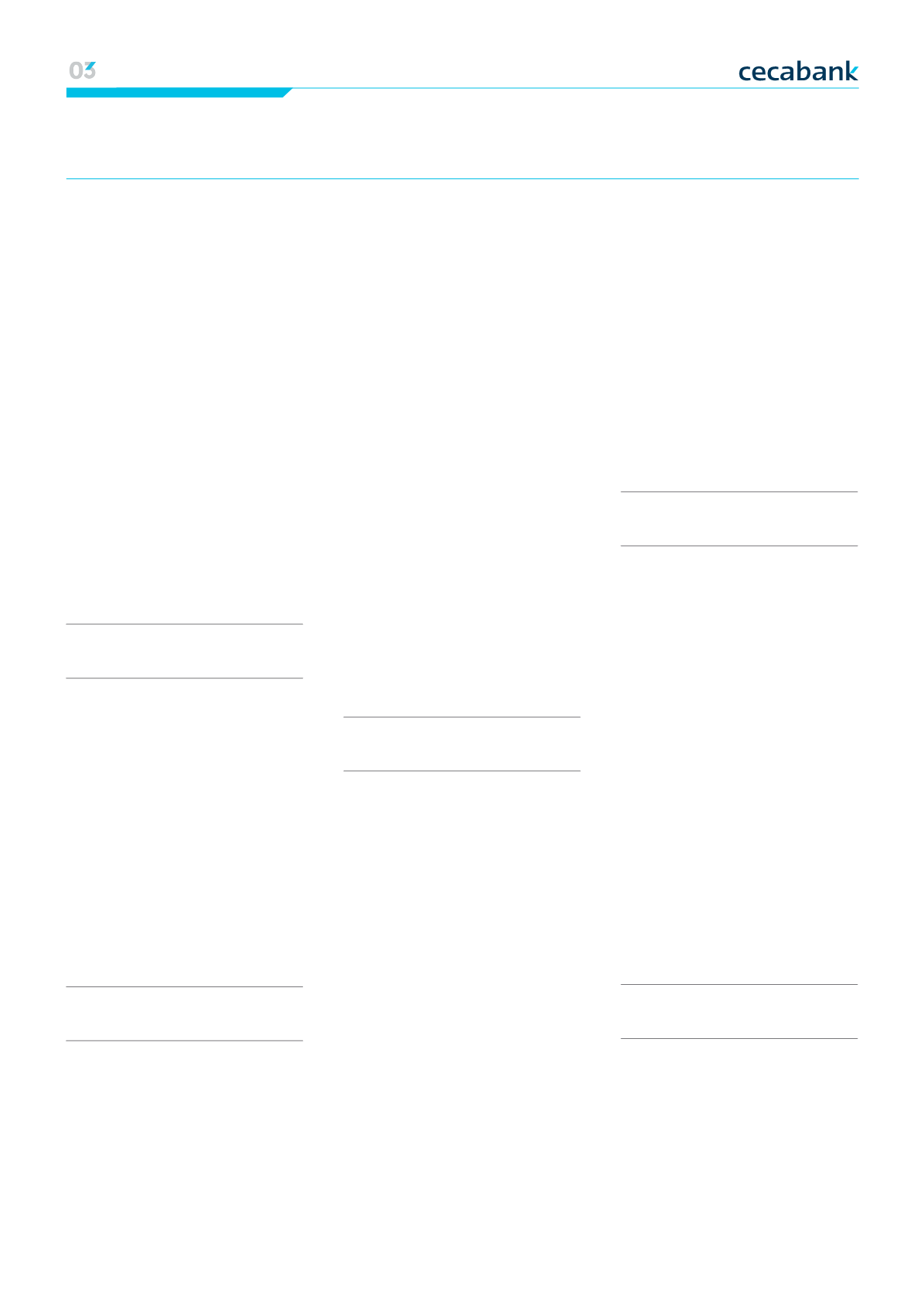

77
Annual Report 2014 Our Business ModelAssets and Liabilities Committee (COAP)
The role of the Assets and Liabilities
Committee (COAP) is to approve,
inform, manage, monitor and
supervise the institution’s financial
risks. The COAP also puts into
practice the policies established
by the Board of Directors in the
financial area, defining the tasks
and functions to be carried out in
the institution.
8
meetings
2014
Risk Committee
Has the task of ensuring that the
entity’s risk exposure is within
the tolerance established by
the Board of Directors and the
COAP; continuously adapt risk
management procedures in line
with the growing sophistication of
the financial market and align
them with current capital
requirements, and continuously
adapt the valuation methodologies
to best market practice and the
institution’s needs.
11
meetings
2014
Financial committee
Handles the ordinary management
of market risks, in line with the
policy approved by the Board and
the guidelines issued by the COAP,
submitting to it the information
necessary for decision-making.
Likewise, in accordance with the
COAP’s resolutions, it entrusts the
management and monitoring of
investments and divestments of
equity, debt and various account
balances on the institution’s
balance sheet, submitting the
relevant information to the COAP.
20
meetings
2014
New financial products
committee
Has the objective of ensuring that
the institution has full knowledge
of the risks it is incurring through
its market operations and financial
products. It has the necessary
infrastructure for the management,
control and administration of
these risks.
It advances on the standardisation
of financial products in which the
institution operates, from
the systems and procedures point
of view.
5
meetings
2014
Liquidity contingency
committee
Evaluates any possible liquidity
crisis and decides whether to trigger
the contingency plan in the light
of the quantitative and qualitative
indicators, and where applicable,
classifies the degree of intensity of
the crisis. It assesses the specific
reasons giving rise to the crisis and
judges its possible duration and
the seriousness of the liquidity
problem. It defines the strategy
to manage the situation,
determining the relevant areas in
which to intervene.
It coordinates the areas involved
in the execution of the plan and
makes any necessary adjustments
to them, to update it in line with the
market situation.
11
meetings
2014
00 Strategic lines |Economic and regulatory context | Strengthening our model
|
Business lines 01 Financial information | Profit & loss | Activity |Capital base | Ratings 02 Risk management | The Cecabank risk function



















